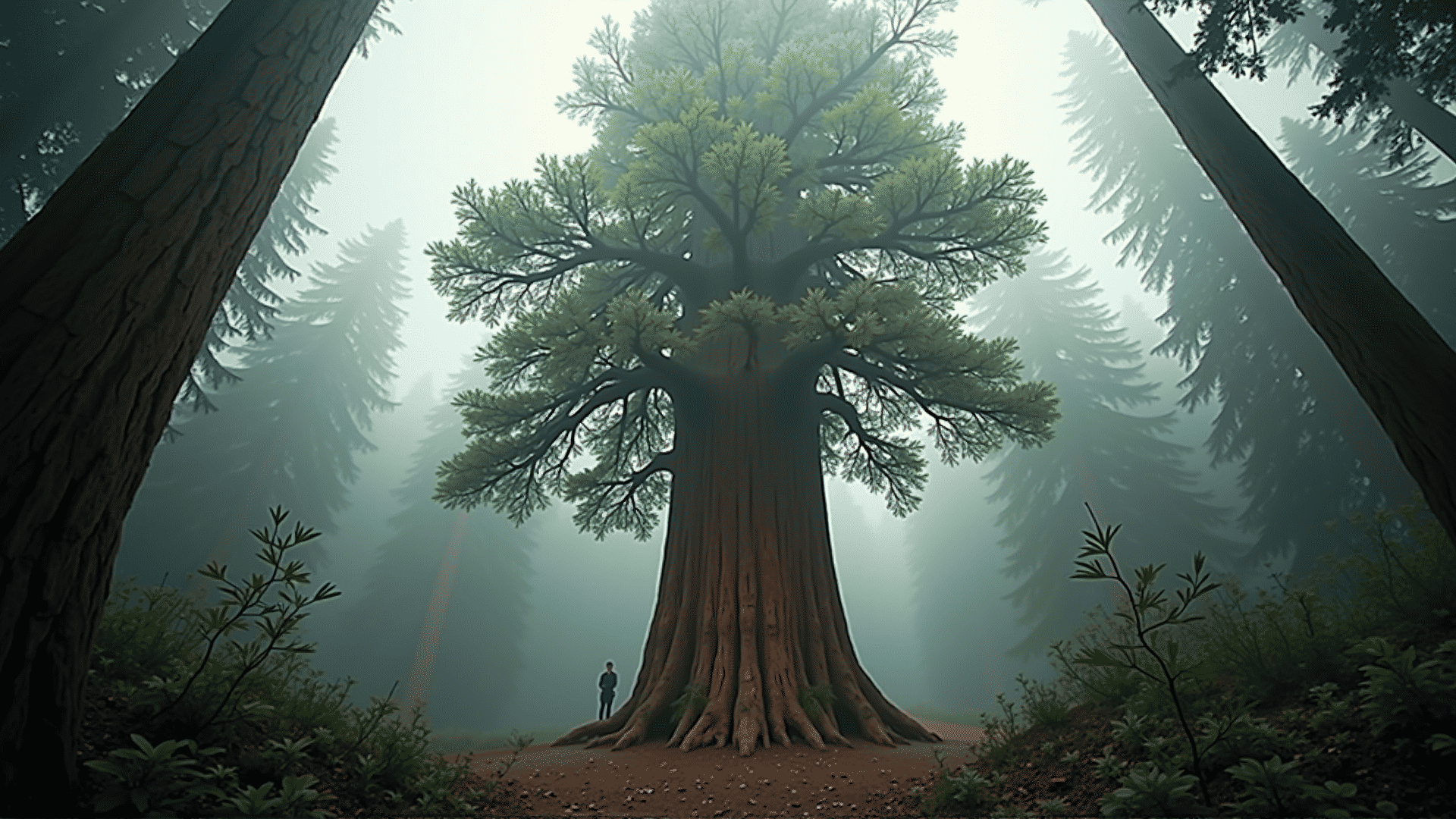The United States is home to some of the tallest trees in the world, with towering giants that inspire awe and respect. These trees are not only majestic in their height but also play significant ecological roles in their respective habitats. Let's explore some of these awe-inspiring giants, their locations, and the vital roles they fulfill within their ecosystems.
The Coastal Redwoods of California
Standing as the undisputed giants of the plant kingdom, the coastal redwoods (Sequoia sempervirens) are found along the Pacific coast, primarily in Northern California. The tallest known living specimen, Hyperion, stands at a staggering 379.7 feet in Redwood National Park. These redwoods thrive in the damp, foggy conditions of coastal environments, and their extensive shallow root systems help them extract water from the mist that frequently blankets their habitat.
Redwoods play a critical ecological role—acting as keystone species in their ecosystem. The canopy of these ancient beings provides habitat for a multitude of species, from birds to epiphytic plants, while their leaf litter contributes to a rich forest floor that supports countless organisms. Moreover, by storing large amounts of carbon in their massive trunks, redwoods play a pivotal role in mitigating climate change.
The Douglas-Firs of the Pacific Northwest
Towering in the forests of the Pacific Northwest, the Douglas-fir (Pseudotsuga menziesii) comes in as another contender for tall trees. Standing at over 330 feet, individuals like the Brummitt Fir in Oregon showcase the potential heights this species can achieve. These trees thrive in the temperate rainforests, benefiting from the ample rainfall and mild climate of the region.
Douglas-firs are essential for their ecosystems. They provide habitat and food for various species such as squirrels, woodpeckers, and insects. Their thick bark is adapted to withstand forest fires, allowing them to survive and regenerate post-disturbance, thus playing a crucial role in maintaining forest dynamics and succession.
The Sitka Spruces of Alaska
In the temperate rainforests of Southeast Alaska, the Sitka spruce (Picea sitchensis) stands tall, with the tallest known tree reaching over 317 feet. These trees are adapted to withstand the harsh, wet conditions of their northern habitats, with needle-like leaves that shed water efficiently.
Sitka spruces serve as an integral part of coastal forest ecosystems, providing stability and structure. They support a wide array of wildlife, including birds, mammals, and insects, by offering nesting sites and sustenance. Additionally, these trees are vital in the formation of healthy salmon streams, as their roots stabilize stream banks and their fallen branches create habitat complexity for aquatic life.
The Role of Conservation
The towering trees of the United States are a testament to nature's grandeur and prowess. However, their survival is closely linked to conservation efforts. Logging, urban development, and climate change pose significant threats to these giants and their habitats. Public and private conservation initiatives aim to protect these standing monuments by preserving old-growth forests and supporting sustainable forestry practices.
By understanding and appreciating the ecological roles these trees play, we can better acknowledge the importance of preserving them. Ensuring their survival not only maintains biodiversity but also safeguards the myriad of services these giants provide, from carbon sequestration to habitat provision.
In conclusion, the tallest trees in the USA are more than just biological wonders; they are pivotal in maintaining the integrity and health of their ecosystems. Whether towering in the coastal regions of California, the lush forests of the Pacific Northwest, or the remote wilderness of Alaska, these trees remind us of the need for conservation and the interconnectedness of all living things within their natural habitats.
